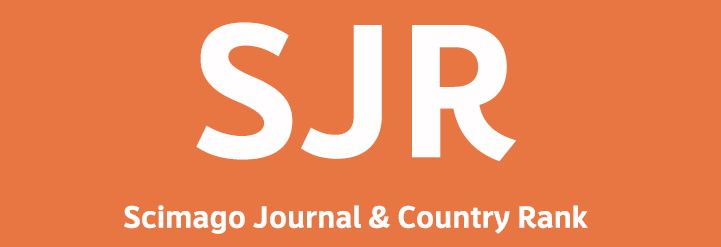INITIAL STUDY ON THE PROSPECT OF SOLID OIL WASTE UTILIZATION FROM X FIELD AS A BASIC MATERIAL FOR ROAD ASPHALT MIXING WITH MARSHALL TEST
DOI:
https://doi.org/10.29017/scog.v48i1.1693Keywords:
Oil-Solid Waste, ARPS, Marshall Test, Road AsphaltAbstract
The upstream oil and gas industry in the production sector is made up of numerous lifting activities, carried out in wells, as well as storage and sales tanks. Preliminary research has been conducted on the process of gathering systems from each point of the production facility unit to determine the pressure loss, blockage or leakage problems. The findings showed that oil spill points due to the accumulation of crude spills mixed with other sediments was approximately 2043 m3 per week. B3 waste disposal is often a burden for companies because it is expensive without revenue value, while solid waste has economic value and can be reused. Therefore, this research aimed to evaluate the use of solid waste containing 48.01% Total Petroleum Hydrocarbons (TPH), including mineral and metal sediments, namely XRD, XRF and AAS tests as basic materials for road asphalt. The result showed that the use of solid waste with a density specification of 0.92 and a Pour Point of 1700 C as the basic material for making road asphalt mixed with aggregate achieved an initial setting time of less than 5 minutes and Compressive Strength of 0.25 MPa less than the 2 MPa standard value at R20. In conclusion, the Asphalt Resin Paraffinic Sediment obtained from solid waste was less than 10% and could not be used for road asphalt hardening, hence the need to add commercial asphalt and other additives.
References
Abbasa, Z.T.; Maqsooda; Alib M.F., 2010. The Demetallization of Residual Fuel Oil and Petroleum Residue. Petroleum Science and Technology. Vol 28. Issues 17. 1770 - 1777. https://doi.org/10.1080/10916460903226122
Al Zubaidi, I. & Al Tamimi, A., 2014, 'Production of sustainable pavement with oil sludge’, Road Mater. Pavement Des., vol. 15, 2014, doi: 10.1080/14680629.2014.908139.
Bina Marga, 2003, RSNI-M-01-2003, Metode Penguji Campuran Beraspal Panas dengan Alat Marshall’, Pustran Balitbang PU, pp. 1-18.
Bina Marga, 2010,Spesifikasi Umum Bina Marga 2010 Revisi 3, Direktorat Jenderal Binamarga, Jakarta.
Budiarjo, M.A., 2007. Studi Pengaruh Bulking Agents Pada Proses Bioremediasi Lumpur Minyak. Jurnal Purifikasi. Vol 8. No 1. 55 - 60. https://doi.org/10.12962/j25983806.v8.i1.114
Charles, J., 2014, Used Oil vs. Wates Oil- What's the difference'. EHS Management Strategies, LLS.
Damanhuri, E.; Adrismar, 2001, Beberapa Karakteristik Oil Sludge Serta Alternatif Pemanfaatannya. Journal of JTM. Vol 8. No 3. 304 - 312.
Desrina, R., 2008, Penelitian dan Kajian Limbah Bahan Berbahaya dan Beracun Kegiatan Eksplorasi dan Produksi Minyak dan Gas Bumi, Lembaran Publikasi Minyak dan Gas Bumi, Vol 42, No 3. https://doi.org/10.29017/LPMGB.42.3.118
Gia, N.P., Gunawan, W. & Alfian, M., 2017, ' Pemanfaatan Limbah Oil Sludge untuk Campuran Beraspal Jenis Lataston (Lapis Tipis Aspal Beton) dengan Pengujian Marshall'. Jurnal Online Mhs. Fak. Tek. Univ. Riau, vol. 4, no. 1, pp. 1–9, February 2017. from https://www.neliti.com/publications/205335/pemanfaatan-limbah-oil-sludge-untuk-campuran-beraspal-jenis-lataston-lapis-tipis.html.
Karamalidis, A.K. & Voudrias.E., 2007, Cement-based stabilization/ solidification of oil refinery sludge: Leaching behavior of alkanes and PAHs, Journal of Hazardous Materials,148(1–2), 122–135. https://doi.org/10.1016/j.jhazmat.2007.02.032
Mulyono, T., 2005, Teknologi Beton, Yogyakarta: Penerbit ANDI.
Mulyono, M., Desrina, R., & Legowo, E. H., 2002, Study of Hazardous Waste Treatment and Management for The Oil And Gas Industries, Scientific Contributions Oil and Gas, Vol 25, No 2.
DOI: https://doi.org/10.29017/SCOG.25.2.1069
Nuraini.N, & Erwansyah.L, 2018, Naturally Occuring Radioactive (NORM) dua Pipa Sumur Produksi Minyak dan Gas, Lembaran Publikasi Minyak dan Gas Bumi, Vol 41, No 3.
DOI: https://doi.org/10.29017/LPMGB.41.3.195
Prasetya, B.; Sudijono; Kasinoputro, P. (2006). Pemanfaatan Lumpur Minyak untuk Pembuatan Komposit Berserat Lignoselulosa. Jurnal Tropical Wood Science & Technology. Vol 4. No 1. 9 - 13.
PT. Pertamina, 2001, Pedoman Pengelolaan Limbah Sludge Minyak Pada Kegiatan Operasi Pertamina. Jakarta: Pertamina.
Sari. C. T, & Lubnah. L., 2018, Bioremediation of Petroleum Hydrocarbon In Contaminated Soils: Comparison Of Compost And Wwtp Sludge Residual Addition. Scientific Contributions Oil & Gas, vol 40 No 1. DOI: https://doi.org/10.29017/SCOG.40.1.35
Satayeva, S. S., Burakhta, V. A., Urazova, A. F., Nazarova, D. S., Khamzina, B. E., Begaliyeva, R. S., Shinguzhieva, A. B., Satybayeva, N. A., Yerzhanova, Z. T., & Murzagaliyeva, A. A., 2024, ' Asphalt Concrete Production Technology Using Oil Sludge from Zhaik Munay LLP'. Journal of Engineering and Technological Sciences, 56(1), 71–80. https://doi.org/10.5614/j.eng.technol.sci.2024.56.1.6.
Sekr. Negara Republik Indonesia, 2021, PP Nomor 22 Tahun 2021, “Peraturan Pemerintah Nomor 22 Tahun 2021 tentang Pedoman Perlindungan dan Pengelolaan Lingkungan Hidup” vol. 1, no. 078487A, pp. 1–483, 2021.
Silvia, S., 2016, Beton Aspal Campuran Panas, Institut Teknologi Nasional, Bandung.
Spence, R.; Shi, C., 2006, Introduction, Stabilization and Solidification of Hazardous, Radioactive,and Mixed Wastes. USA: CRC Press.
Downloads
Published
Issue
Section
License
Copyright (c) 2025 © Copyright by Authors. Published by LEMIGAS

This work is licensed under a Creative Commons Attribution 4.0 International License.
Authors are free to Share — copy and redistribute the material in any medium or format for any purpose, even commercially Adapt — remix, transform, and build upon the material for any purpose, even commercially.
The licensor cannot revoke these freedoms as long as you follow the license terms, under the following terms Attribution — You must give appropriate credit , provide a link to the license, and indicate if changes were made . You may do so in any reasonable manner, but not in any way that suggests the licensor endorses you or your use.
No additional restrictions — You may not apply legal terms or technological measures that legally restrict others from doing anything the license permits.














